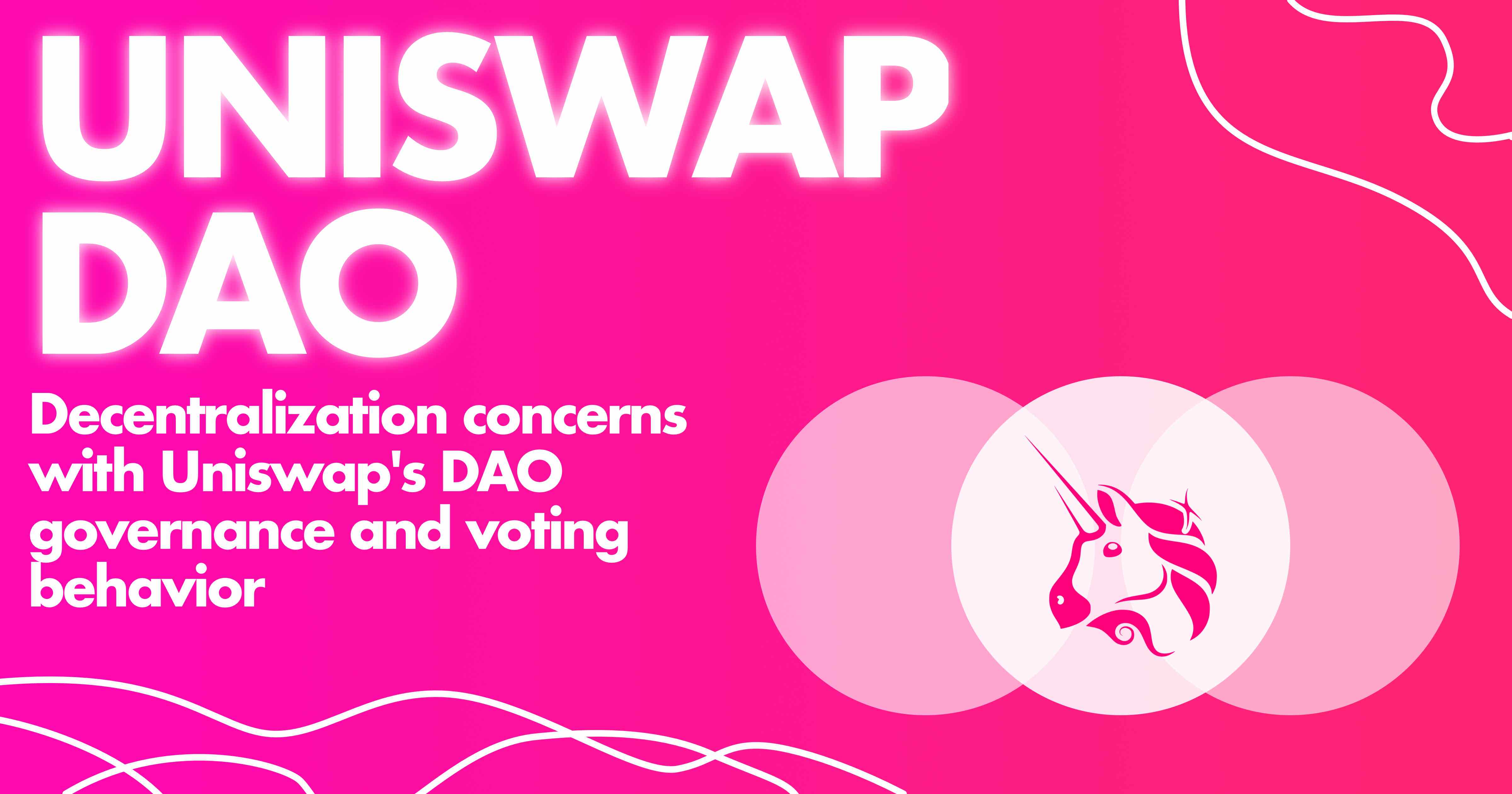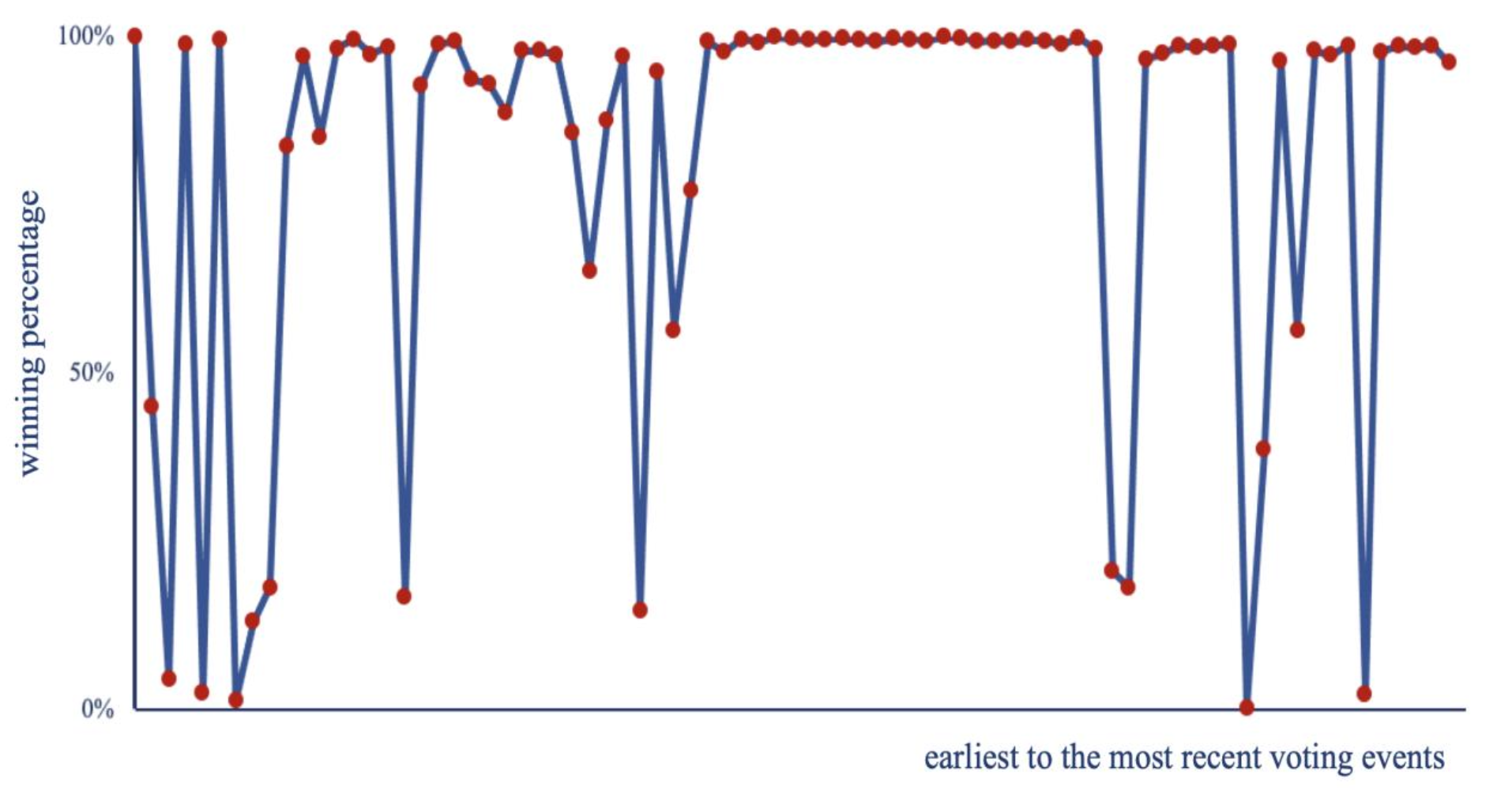Decentralization concerns with Uniswap's DAO governance and voting behavior
 Jyotirmoy Barman
Jyotirmoy Barman
Uniswap is a popular decentralized cryptocurrency exchange that has gained a lot of attention in recent years. One of the unique features of Uniswap is its governance system, which allows token holders to vote on proposals for changes to the platform. However, a recent analysis of Uniswap’s voting data has revealed some concerns.
One issue is the low voter participation rate, with only about 7.92% of token holders ever engaging in the platform’s voting. This raises questions about how representative the voting outcomes truly are.
Another issue is the occasional misalignment between the interests of large and small token holders. In certain instances, large token holders have single-handedly overturned the supermajority’s stance, thereby contradicting the consensus of the wider community. Although most proposals exhibit high alignment, there are some cases where large token holders' interests are well-aligned but may not represent the wider community’s consensus.
Uniswap’s Snapshot voting platform comprises a total of 79 proposals. To assess the voting intentions of individual participants, it is crucial to consider the number of voters without taking into account the number of tokens each voter casts. Votes that concur with the ultimate winning outcome are designated as “winning votes.” The winning percentage is calculated by dividing the number of winning votes by the total number of voters. A higher winning percentage signifies a stronger alignment of interests among the voters.
The dataset encompasses 79 data points, ranging from a minimum value of 0.32% to a maximum of 100%. When categorized into four bins, 11 data points reside within the low alignment range (0-25%), signifying limited consensus among voters. Conversely, only 3 data points are found in the moderate-low alignment range (25-50%) and another 3 data points in the moderate-high alignment range (50-75%), both indicating varying levels of concurrence among participants. A significant majority of proposals (62 out of 79) are situated in the high alignment range (75-100%), showing that voters' interests are often closely aligned. This analysis indicates that, in the majority of cases, a strong consensus exists among voters, with just a few proposals displaying low or moderate alignment. The data exhibits a positive skew with an average of 85.93% and a median of 98.11%, as numerous proposals demonstrate high alignment. The standard deviation of 24.28% suggests that the dispersion of data points is relatively large. A smaller proportion of proposals exhibit low or moderate alignment, emphasizing the infrequency of such instances.

It is important to note that the majority of token holders only voted a few times, and only a few token holders voted many times. Specifically, out of the 25,842 engaged token holders, 29 voted more than 50 times, 4,039 voted between 10 and 50 times, and the remaining 21,774 voted fewer than 10 times. This suggests that there is room for more token holders to participate in the voting process and make sure that everyone's voice is heard.
Overall, Uniswap’s governance system has some strengths and weaknesses. While it gives token holders a voice in the platform’s decision-making process, there are concerns about the representativeness of the voting outcomes and the occasional misalignment of interests between large and small token holders. As the platform evolves, addressing these issues and ensuring a fair and effective governance system for all users will be crucial. Encouraging more token holders to participate in the voting process and ensuring that everyone's voice is heard are important steps toward achieving this goal.
Subscribe to my newsletter
Read articles from Jyotirmoy Barman directly inside your inbox. Subscribe to the newsletter, and don't miss out.
Written by

Jyotirmoy Barman
Jyotirmoy Barman
I'm a developer who loves to write. I started my blog because I wanted to share my knowledge and passion for technology with others. I write about a variety of topics, including coding, web development, and blockchain.